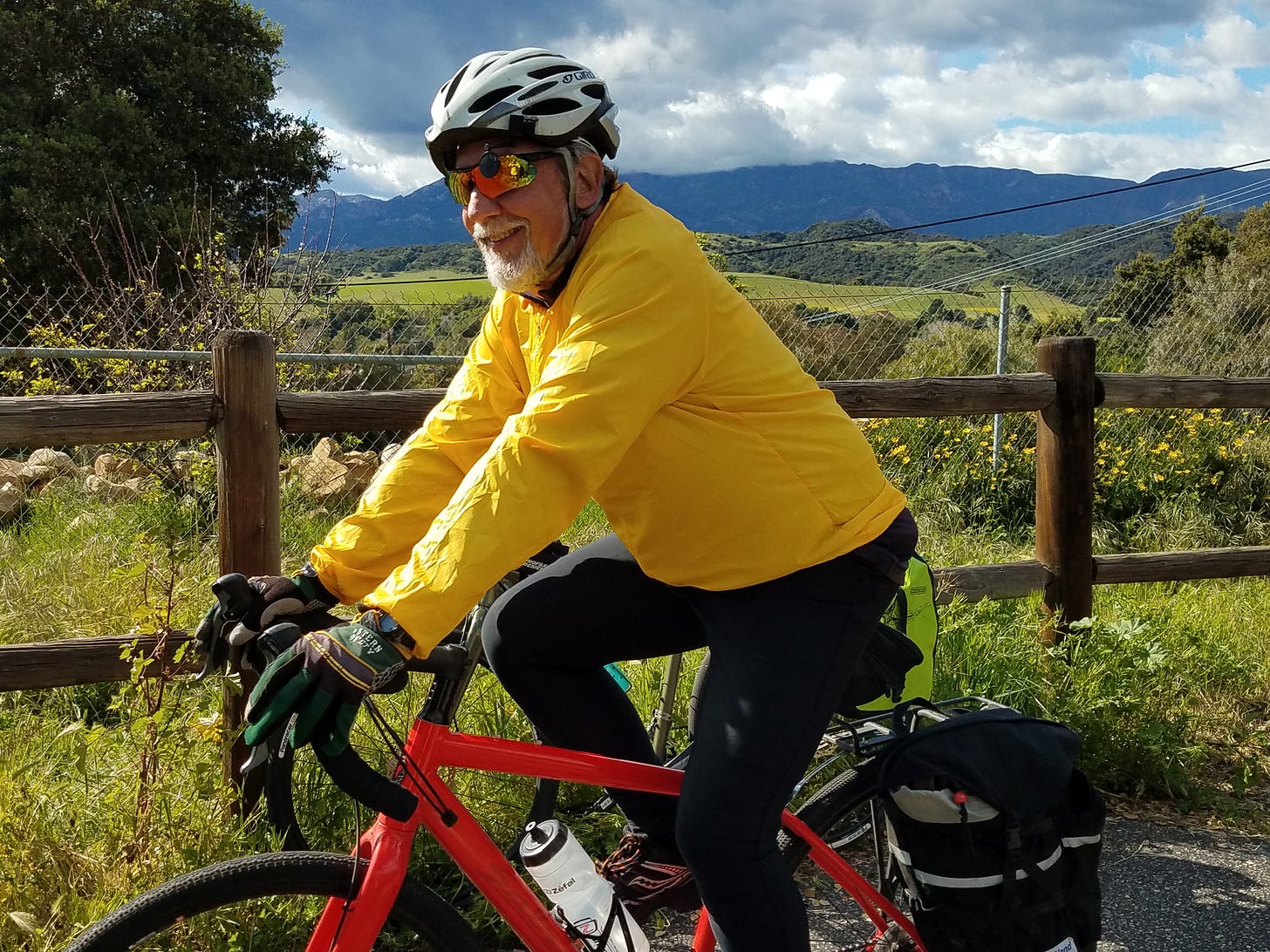Professor Emeritus. Mountain Bike Hall of Famer. Founding member of IMBA and CORBA. Mountain biking advocate for trail access going back to the 1980s.
Jim Hasenauer needs little-to-no introduction. Below is round 1 of 4 of a Q&A series found exclusively here. Let’s get to it:
1. You have a long and storied history with the mountain biking community of the USA. What's remained the same through all of those years, with regard to the community? Any one particular constant?
A lot has changed, but the constant I see is the feeling of post ride joy. Regardless of the type of riding, whether Type 1 or Type 2 fun, novices, pros and all in between, return from their rides with smiles, high-fives and backslaps. It's a joy to ride and the endorphin rush is the mountain biking universal. I think that stoke becomes the motivation to ride more, to explore new trails, to build and maintain trails, to become involved in advocacy, to read and write about bikes, and to make connections with others who share the passion.
2. What's changed? For the better? For the worse?
Better: There are way more of us. NICA and other youth programs are bringing in thousands of younger riders. More girls and women are riding and they're organizing. There are more places to ride. Our organizations are stronger and better connected. Most land managers recognize our legitimacy. Many municipalities understand the quality of life, health and economic benefits of trails. We have the potential to forge a very powerful political movement that benefits us, the public lands and our communities.
I don't think there's anything that's worse, but there are plenty of new challenges. The large number of riders require expanded efforts to educate, organize and self regulate. The explosion of ebikes intensifies that. There are some places, where trail closures have calcified and anti-bike folks still control the narrative and the process. Here in California, some of the first land access battles are still stuck in the eighties. In Mid-Pen Regional Open Space a public process to open some new trails to bikes, is being aggressively resisted by a small number of anti-bike equestrians. While the US Forest Service has provided many innovative trail programs, they seem unwilling to address the flawed, biased processes of the eighties that closed the Pacific Crest Trail and federally designated Wilderness. Sometimes our organizations have avoided these thorny issues because it's been easier to build new trails and avoid conflict.
3. As I read your paper, Stranger to Stakeholder to Partner, I couldn't help but smile/chuckle a little bit at the same/familiar challenges you discussed then (1998), as they still play out today. What is one piece of advice you would like to share with advocates seeking mountain biking access to trails? (Yes, only one thing)
Build relationships with the agencies, other trail users, the local business community, and public health entities.
4. Easier question: what bike(s) are you riding these days?
I have five: a 2016 S-works Stumpjumper, a 2020 Trek Domane road bike, a 2019 Salsa Journeyman gravel and touring bike, a 2006 Trek Portland commuter that's been converted to an ebike, and a 1995 reproduction of a 1955 Schwinn Deluxe Cruser that's my CycLAvia and parade bike.
5. If you have a beer after a ride, any preference? What's in the cooler?
I quit drinking in 1992, right at the beginning of the craft beer phenomenon, so I really don't know anything about it now. My theory is that everyone gets to drink X gallons of alcohol and apparently I hit my limit when I was 42. I was a fan of Genesee Cream Ale back east and I was drinking Bud Dry when I quit. Both may reflect the number of bad decisions I made around alcohol. Now there's San Pelligrino in my cooler.




Jim is an inspiration!